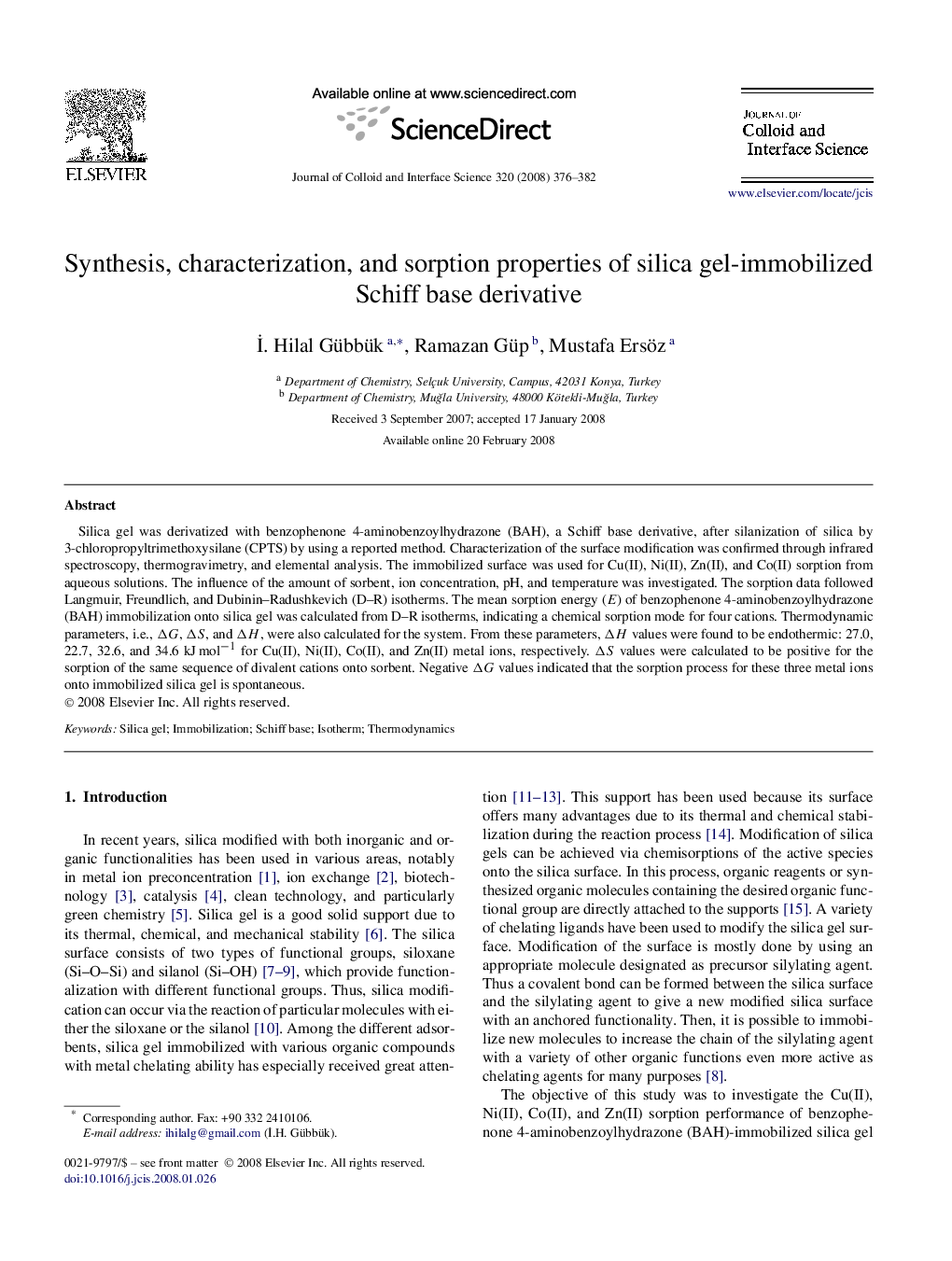| Article ID | Journal | Published Year | Pages | File Type |
|---|---|---|---|---|
| 611250 | Journal of Colloid and Interface Science | 2008 | 7 Pages |
Silica gel was derivatized with benzophenone 4-aminobenzoylhydrazone (BAH), a Schiff base derivative, after silanization of silica by 3-chloropropyltrimethoxysilane (CPTS) by using a reported method. Characterization of the surface modification was confirmed through infrared spectroscopy, thermogravimetry, and elemental analysis. The immobilized surface was used for Cu(II), Ni(II), Zn(II), and Co(II) sorption from aqueous solutions. The influence of the amount of sorbent, ion concentration, pH, and temperature was investigated. The sorption data followed Langmuir, Freundlich, and Dubinin–Radushkevich (D–R) isotherms. The mean sorption energy (E) of benzophenone 4-aminobenzoylhydrazone (BAH) immobilization onto silica gel was calculated from D–R isotherms, indicating a chemical sorption mode for four cations. Thermodynamic parameters, i.e., ΔG, ΔS, and ΔH, were also calculated for the system. From these parameters, ΔH values were found to be endothermic: 27.0, 22.7, 32.6, and 34.6 kJ mol−1 for Cu(II), Ni(II), Co(II), and Zn(II) metal ions, respectively. ΔS values were calculated to be positive for the sorption of the same sequence of divalent cations onto sorbent. Negative ΔG values indicated that the sorption process for these three metal ions onto immobilized silica gel is spontaneous.
Graphical abstractImmobilized silica gel surface was used for Cu(II), Co(II), Zn(II), and Ni(II) sorption from aqueous solutions. The data were fitted to Langmuir, Freundlich, and Dubinin–Radushkevich (D–R) isotherms. The thermodynamic parameters were calculated.Figure optionsDownload full-size imageDownload as PowerPoint slide
